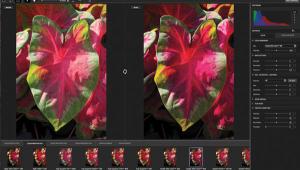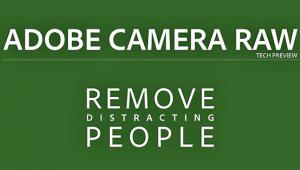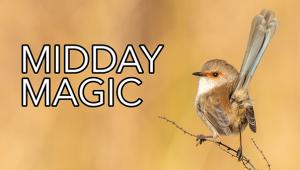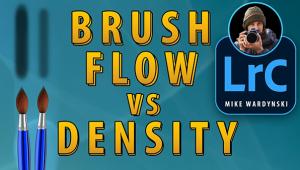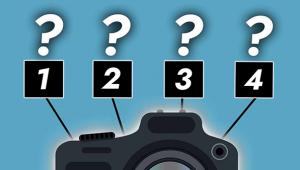Digital In Black And White
The Status Of Ink Jet B&W Printing In 2005 Page 2
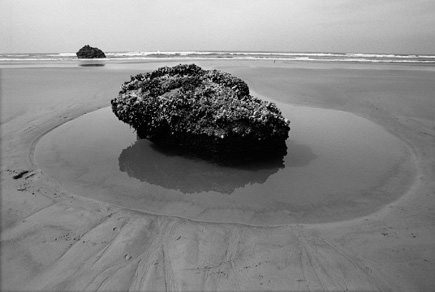 |
|
|
Considerations And Recommendations
First of all, to recap, printing color photographs with an ink jet printer is
now well supported by several companies, by several imaging applications including
Adobe Photoshop, by a number of companies providing color management tools and
software, and by your operating system. Color inks do not, however, provide
a very satisfactory black and white printing experience and results for many
photographers, especially those who have had experience printing black and white
in a wet darkroom. Converting a color ink jet printer to dedicated use by installing
black inks resolves the shortcoming of trying to make black and white prints
with color inks. However, none of the "color" standard color management
tools and software utilities are directly applicable to printing with black
inks.
There is one simple solution where black inks function in color printers effectively
without any special intervention. But, for most printers converting it to black
and white, installing a black ink set requires adding some kind of software
control above and beyond the printer's native driver.
To acquire the same level of custom, precision calibration and profiling that
is easily achieved printing color demands a considerable investment in a software
RIP and some extra skill in using that sophisticated utility effectively, an
investment photographers and printers who are professional and a few well-healed
enthusiasts I am sure are willing to meet. Most of the easy intermediate solutions,
however, are proprietary and, besides forcing you to make a substantial investment
in software, lock you into using particular inks, which can add significantly
to the cost per print.
As black and white digital ink jet printing becomes more popular with enthusiasts,
as I am sure it will, another possibility may follow an already established
path, that of making the use of black inks as easy and effective as using color
inks. This established path is the providing of additional profiles for the
use of popular and even art papers that will linearize a particular model printer
for a combination of a black ink set and a specific paper. If an ICC compliant
printer profile can be produced that includes that linearization, a user could
print gray scale files converted to RGB using the same workflow for color managed
color printing without any special software. This would yield results comparable
to those now requiring expensive proprietary software. As I write this it is
just a dream, a hope, but one that I believe is quite possible.
In the meantime, unlike my experience three years ago, I can recommend getting
into digital black and white printing at whatever level you can afford, and
be reasonably well assured you will obtain print results that are very satisfying,
even to a very experienced wet black and white darkroom worker like myself.
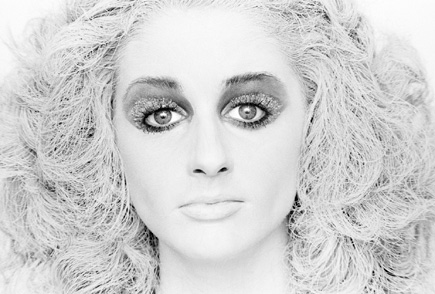 |
|
|
Where To Find The B&W Ink Jet Printing Options
Although some of you reading Shutterbug may have an Epson Stylus Photo 2000P
and would like to get more use out of it by converting it to a dedicated black
and white printer, I am sure many more may want to explore other possibilities.
All of these possibilities are tied to one degree or another to the ink choices
for black and white ink jet printing. So here
are the websites you may want to visit and explore:
Lyson--www.lyson.com/products/quadblackframe.html
Piezography--www.inkjetmall.com
Media Street--www.mediastreet.com
MIS Associates--www.inksupply.com
Sundance/R9--www.bwguys.com
Independent Software B&W Printing Solutions
Studio Print RIP--www.ergosoft.com
or www.inkjetmall.com
Paul Roark--www.paulroark.com
Quad Tone RIP--www.harrington.com
Some Paper Resources
Moab Paper Company--www.inkjetgoodies.com
Inkjet Solutions--www.inkjetart.com
Lyson was the first company offering Quad Black inks for ink
jet printers I became aware of when I first began to explore the options available
for black and white ink jet printing at least four years ago. It is also the
first company that offered a black and white printing solution that allowed
the use of standard printer drivers and profiles with the ability to adjust
the color tone of a black and white ink jet print with their Small Gamut inks.
In addition, it is also the only ink company I have discovered which offers
a dye-ink black and white option with support for desktop printer models other
than Epson's. And, Lyson is now offering an integrated black and white
system supporting the Epson Stylus Photo 2200, as well as the Epson Stylus Pro
7600/9600 printers, including ink, software, and paper, called the Lyson Daylight
Darkroom, that also includes a bulk ink feed system option for the 2200 printer.
Piezography is a proprietary black and white ink jet printing
solution involving both black ink selections including PiezoTone inks, which
support adjustable hue variations, and a Photoshop plug-in print control and
driver software solution. Piezography's newest offering is called iQuads,
and is a further refinement of their approach that involves calibrating and
profiling of an individual user's printer to provide their proprietary
profile custom made for each individual.
When I tested the various options that were available three years ago, I included
a trial of the Piezography system. The software worked very effectively, but
I encountered considerable problems with the ink cartridges resulting in head
clogging problems. At that time ink cartridge problems and unreliability was
endemic with all of the suppliers. In addition, the printed maximum image density
was somewhat less than optimal. In the three years that have intervened ink
cartridge difficulties have been reduced significantly in the industry, and
continuing research and development of the inks now supports a reproduced image
density as high as the paper used will support. My only reservation remaining
about Piezography is that it is a relatively costly option in terms of both
the initial software investment and the price of the inks that support the system.
Media Street is an ink company that has been of most interest
because of their Niagara II Continuous Ink Flow System that is available for
many ink jet printer models. This setup provides the ability to use bulk inks
at considerable savings over the use of separate ink cartridges. Although Media
Street has until now only a selection of color inks sold under their brand name,
at the time of this writing news was that Media Street would soon have a line
of black inks to support black and white printing.
MIS Associates has long been established as a source of ink
jet inks, for both color and black and white printing. In addition, MIS Associates
make their own CFS continuous flow bulk ink systems that support a wide range
of printer models. Besides the Easy UltraTone ink set for the Epson C-series
printers, and the UT-FS ink I used to test the 1270/2000P family of printers,
other black and white ink choices include UltraTone2, Variable-Tone carbon pigment
ink sets supporting adjustable black shades from sepia to a cold bluish black.
MIS Associates offers ink sets in a very wide range of cartridges for a variety
of different Epson printers as well as in bulk. And, I think, users will find
that for a fine quality pigment ink with a tested print life, MIS Associates'
prices are quite moderate.
Sundance/R9 is an ink company that grew out of a black and
white printing set of software solutions. The Sundance inks include a variable
color tone Septone ink set supporting the Epson Stylus Photo 2200 and the Epson
Pro 7600/9600 printers accompanied by the R9 PixelPixasso software RIP (Raster
Image Processor) which supports an ICC color management module and its unique
ICQ multi-density component. This specially programmed software RIP specifically
supports both the control of the ink applied adjusted to the printer used and
the balance of cool to warm image tones. In addition, the Sundance ink sets
include a Quadtone and R9 software support by means of a Photoshop plug-in that
utilizes the ICQ color management function. Sundance and R9 offer a range of
inks and software support for a broad selection of Epson printers at a range
of prices for both enthusiast users and professionals.
Studio Print RIP is a software raster image processor specifically
designed for black and white printing with the Epson Stylus Photo 2200, as well
as the Pro 4000, 7600, and 9600 printers, in addition to the previous Epson
Pro printer models. It supports a number of advanced professional functions,
full ICC compliant color management as well as the ability to linearize ink
application with all channels using any black and white ink set to produce tightly
controlled custom performance that matches printer, ink, and paper characteristics.
Quad Tone RIP is a shareware and inexpensive software facility
made possible through development on the basis of GIMP, a Linux open source
image-editing application. Quad Tone RIP as it is now available supports a large
number of Epson printers and will run on both Windows XP and Apple Macintosh
OS 10.3. It contains support for a number of popular black and white ink sets
including the MIS UltraTone Full Spectrum inks as well as their Piezo-Mix and
Epson-Mix selections, plus the MIS Variable-Tone ink sets, and the Epson UltraChrome
ink set. From what I could gather from user comments Quad Tone RIP does demand
a considerable level of computer experience and expertise. However, just reading
the instructions for its installation and use on the Apple Mac OS 10.3 did not
seem to be that difficult, at least if everything works as it should, but I
cannot from experience confirm this impression is real. Fortunately, the admission
ticket is modest, so if you want really precise printer control of ink application
performance for black and white printing with any of the supported printers,
including now even the Epson Stylus Pro 4000, it is an intriguing possibility.
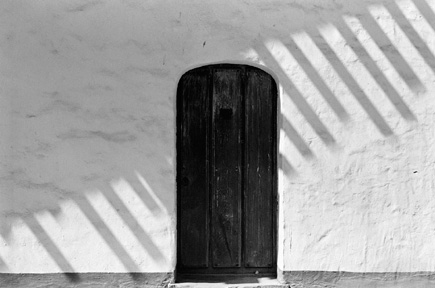 |
|
|
Linearize?
Linearize refers to an analogous function to color matching using calibration
and profiling to obtain a print color result that matches what is displayed
on screen. The term refers directly to the use of a gray scale step tablet,
a digital image that has 20 equally spaced steps of increasing density from
pure white to pure black with each step of equal greater or lesser density than
the one on each side of it, describing a straight line or linear progression
of density increase/decrease. The goal is to be able to reproduce this step
tablet gray scale image to result in an image that, when measured, also has
equal increments of density. Any discrepancy in density measured by a densitometer
is then recorded and plotted to form a curve that, when applied to the image
data to be printed, will assure straight line or "linearized" ink
application performance.
- Log in or register to post comments
